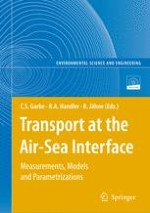Predictions of our future climate vary greatly, with detailed forecasts still subject to debate. One key uncertainty is caused by the lack of our present knowledge of transport processes in the air-water interface, which poses the main transfer resistance between the oceans and atmosphere. Modeling and predictions of our global climate can only be improved by gaining a more complete understanding of the mechanisms involved in transporting energy, mass and momentum across the phase boundary.
This monograph contains selected, peer-reviewed post-conference contributions of the International Workshop on Transport at the Air-Sea Interface, which took place at Heidelberg University from September 6-8, 2006. The workshop brought together leading scientists from around the world, bridged the gap between modeling and measurements, and sparked new ideas for novel simulation and experimental efforts. The focus of the monograph is on small scale processes directly at the interface and includes the topics:
- Small-scale transport processes at the air-sea interface: surface divergence, microscale and largescale wave breaking, intermittency and rain-induced gas exchange
- Novel measurement techniques including eddy correlation measurements, active and passive thermography, visualization of concentration fields by fluorescent dyes, profile measurements and visualization of flow fields by particle imaging velocimetry (PIV)
- Modeling of the transport across the air-water interface and simulation of flow fields as well as concentration fields in the boundary layer
- Parameterizations of the transfer process for global modeling
